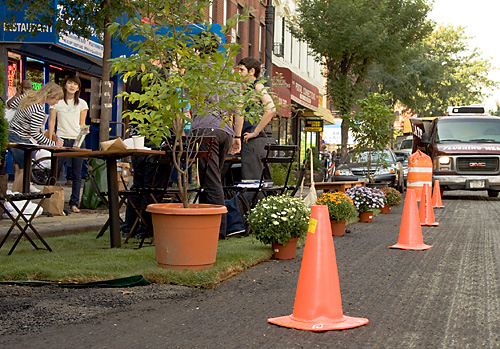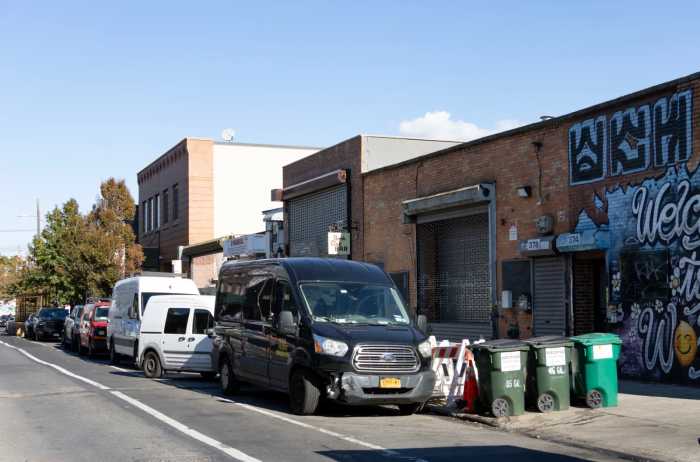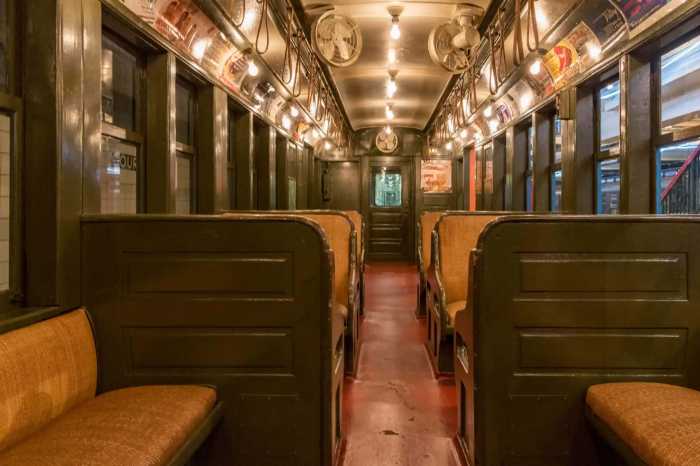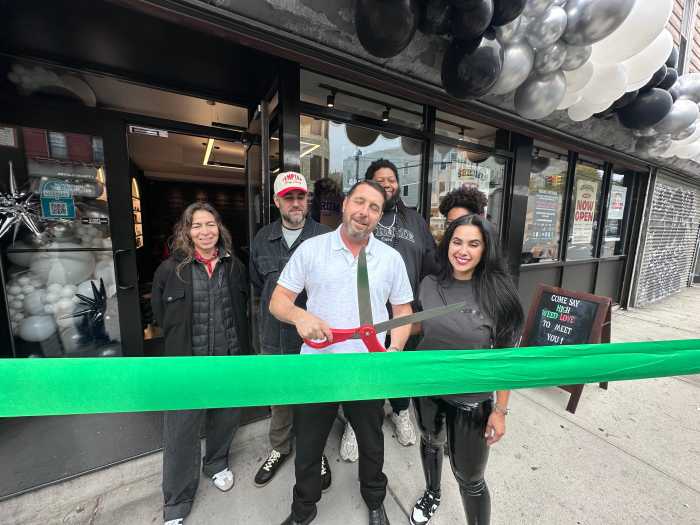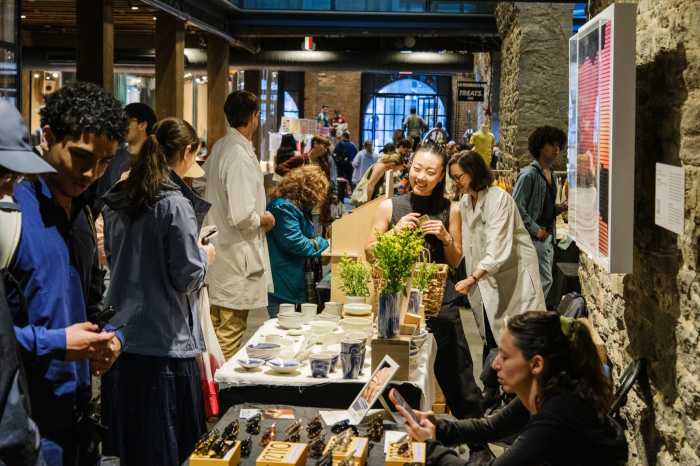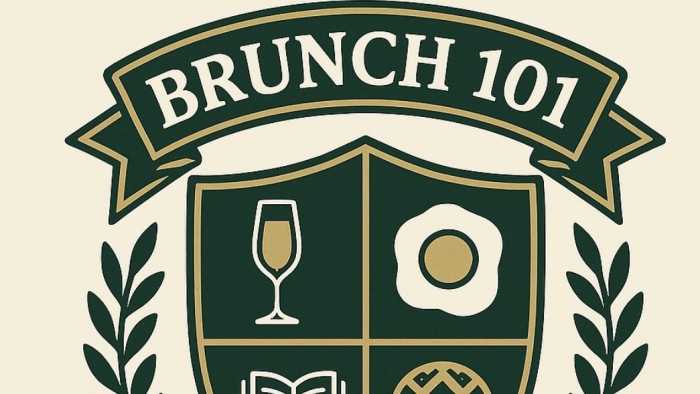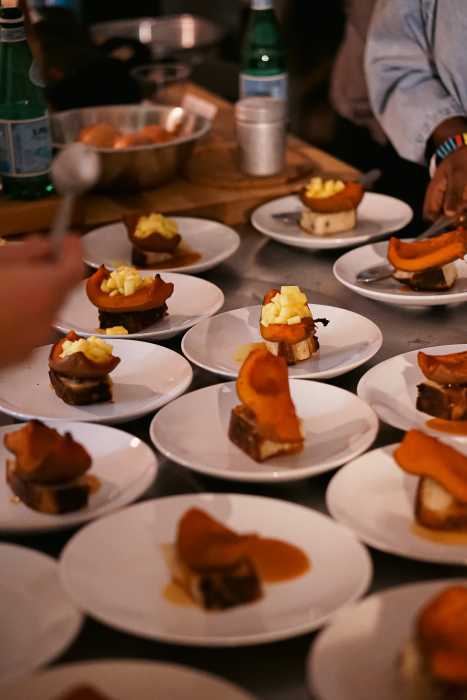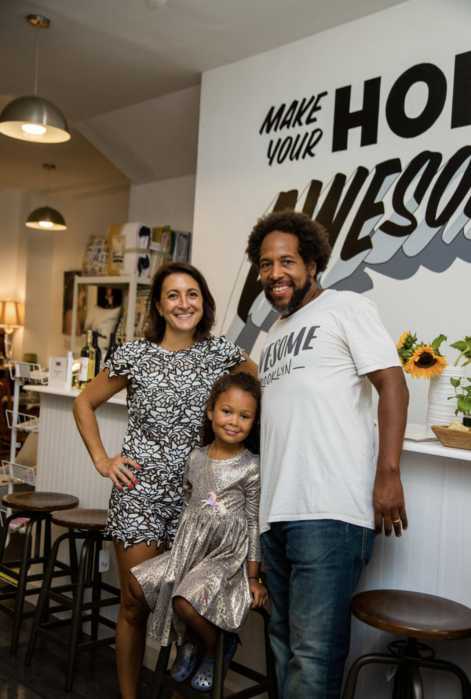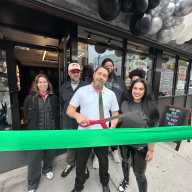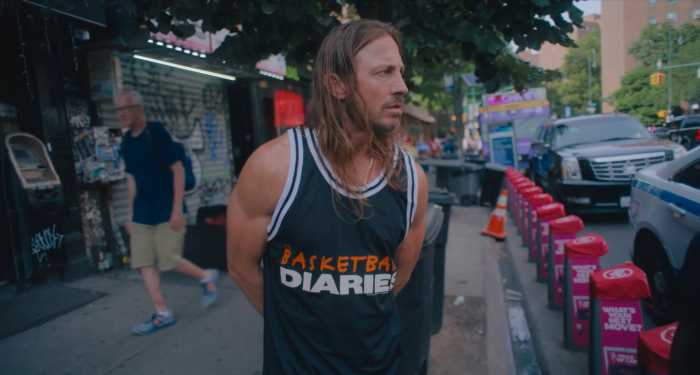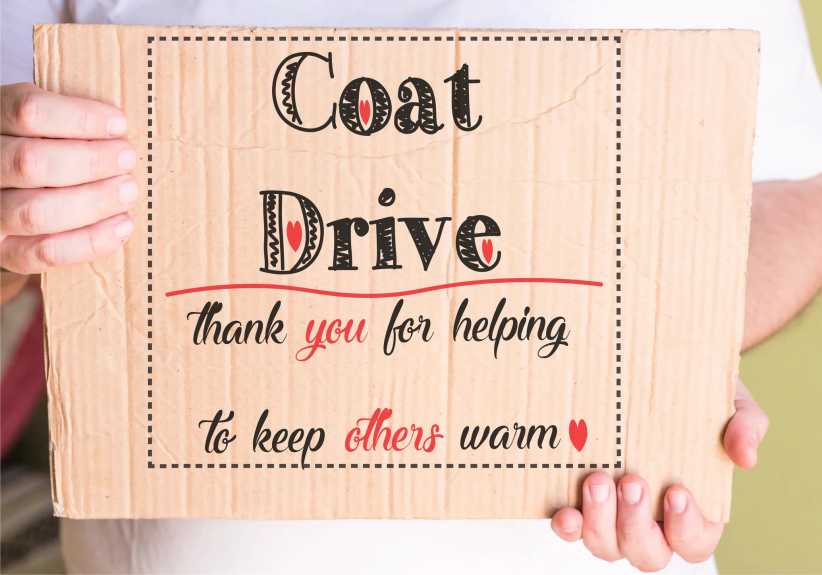Hey, drivers: take a hike!
That was the message last Friday, when activists commandeered two parking spots in front of Joseph Tyler Salon on Myrtle Avenue and carpeted them with sod as part of a nationwide Park(ing) Day, an event designed to emphasize how much public space in this country is given over to the automobile.
The so-called Adami Park, named for a family of Myrtle Avenue merchants, covered two parking spots between Washington and Waverly avenues, and was a remarkably alluring sliver of greenspace amid the surrounding din of construction on the rapidly developing avenue. Passersby were drawn to the shock of thick, green grass, and a few hesitantly stepped onto the itty-bitty greensward, where the activists had arranged two small tables, nine chairs, and a long wooden bench. A nursery’s worth of potted plants anchored the grass to the road (which is in the process of being repaved).
Visitors didn’t quite know what to make of the spectacle.
“Let me just see how this feels,” said Vernon Gaskin, a Clinton Hill resident who sat down on the wooden bench and then called his wife excitedly on the cellphone.
“This is on Myrtle Avenue — but it’s nice!” he said. “You gotta see it, baby.”
“There’s really not a lot of places you can lounge in this neighborhood,” added Gaskins, when he got off the phone. “Even the bus stops don’t have seats anymore.”
Transportation Alternatives and the Trust for Public Land supplied the materials for the event, but the organizers of this oasis had a second, particularly local agenda. A group of Pratt Institute undergrads and the Myrtle Avenue Revitalization Project wanted to draw attention to their efforts to beautify the street, and to solicit ideas for how to make it more user-friendly.
“We’re specifically looking at street-spaces — how do people on foot, on bikes, pushing strollers, how do they use the space,” said Samantha Razook Murphy, a professor at Pratt Institute. “How can we make it more useful, attractive to visitors, and still retain its historical character?”
Israel Ortiz, who has lived in the neighborhood for 40 years, said the park-in-lot was a good start.
“This is better than all the dust,” said Ortiz, smiling as he regarded the green from the pockmarked sidewalk. “That’s real grass? That’s good. We have enough of this pollution.”
Gaskins agreed and said Myrtle Avenue could use more such street furniture — as long as it was strategically situated, of course.
“It’s a good concept, but it depends on who wants to lounge there,” said Gaskins. “If people are going to abuse it, that’s something else. As long as it’s not near a methadone clinic, or something like that, then it’s a good idea.”


